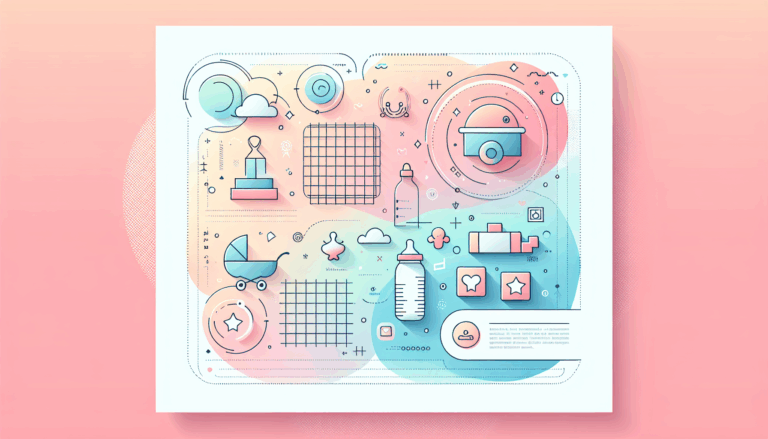Figma to WordPress: Implementing Web Bluetooth API
Streamlining Your Design-to-Development Workflow: Figma to WordPress
In the modern web development landscape, tools like Figma and WordPress have become indispensable for designers and developers alike. However, the process of converting Figma designs into fully functional WordPress websites can be daunting, especially when integrating advanced features like the Web Bluetooth API. Here’s a comprehensive guide on how to seamlessly transition your Figma designs to WordPress, with a focus on IoT integration and the Web Bluetooth API.
Understanding Figma and WordPress
Before diving into the conversion process, it’s essential to understand the roles of Figma and WordPress in your workflow.
- Figma: A powerful design tool used for creating UI/UX designs, prototypes, and high-fidelity mockups. It is particularly useful for collaborative design work and offers a wide range of plugins and integrations to enhance its functionality.
- WordPress: A popular content management system (CMS) that allows you to build and manage websites easily. WordPress is highly customizable and supports a wide range of plugins, including those that facilitate the integration of Figma designs.
Methods for Converting Figma Designs to WordPress
There are several methods to convert Figma designs into WordPress websites, each with its own set of advantages and limitations.
Manual Conversion
Manual conversion involves building the WordPress site from scratch using HTML, CSS, and PHP. This method requires a good understanding of web development and can be time-consuming.
- Step-by-Step Process:
- Export your Figma design as HTML and CSS.
- Set up a WordPress theme and install necessary plugins like Elementor or Beaver Builder.
- Manually recreate the design elements in WordPress, ensuring responsiveness and functionality.
Using Plugins and Tools
Several plugins and tools can streamline the conversion process, making it more efficient and less prone to errors.
- UiChemy:
- UiChemy is a plugin that converts Figma designs into Elementor modules. It supports various widgets and allows for auto-layout conversion. To use UiChemy, you need to install the plugin in Figma, select the frames you want to convert, and then import the JSON file into your WordPress site.
For more details on using UiChemy, you can visit their website.
- Fignel:
- Fignel is another AI-powered tool that converts Figma designs into fully responsive WordPress/Elementor websites. It supports various Elementor modules and optimizes elements for auto-layout, reducing manual adjustments. Fignel offers a free trial and is user-friendly, even for those new to web development.
You can explore Fignel’s features and sign up for a free trial on their website.
- Siter.io:
- Siter.io provides a plugin that allows you to export Figma designs directly into a website without needing coding expertise. It supports responsive designs and allows for direct integration of HTML code. However, it may not transfer animations and transitions from Figma due to API limitations.
Learn more about Siter.io and its capabilities on their website.
Integrating Web Bluetooth API
When it comes to integrating the Web Bluetooth API into your WordPress site, you need to ensure that your site is set up to handle such advanced functionality.
Step-by-Step Integration
- Set Up Your WordPress Site:
- Ensure you have a WordPress site set up with a theme that supports custom JavaScript and CSS. You can use themes like Astra or GeneratePress, which are highly customizable.
- Install Necessary Plugins:
- Install plugins that allow you to add custom JavaScript and CSS to your site. Plugins like WPCode or Custom CSS & JS can be very useful for this purpose.
- Add Web Bluetooth API Code:
- You will need to add the Web Bluetooth API code to your site. This can be done by adding custom JavaScript files to your theme or using a plugin that supports custom code snippets.
- Ensure Compatibility:
- Make sure your site is compatible with browsers that support the Web Bluetooth API. Currently, Chrome and Edge are the primary browsers that support this API.
Real-World Examples and Case Studies
Using Fignel for IoT Integration
- Case Study: A company specializing in IoT devices wanted to create a website that could interact with their devices using the Web Bluetooth API. They designed their website in Figma and used Fignel to convert the design into a fully responsive WordPress site. Fignel’s auto-layout feature and support for various Elementor modules made the process efficient. The company then added the Web Bluetooth API code using custom JavaScript files, ensuring seamless interaction between the website and their IoT devices.
Manual Conversion with Elementor
- Case Study: A startup decided to build their website from scratch using Figma designs and WordPress. They exported the Figma design as HTML and CSS and then used Elementor to recreate the design elements manually. They added the Web Bluetooth API code using WPCode, ensuring that the site could communicate with IoT devices. Although this method was more time-consuming, it allowed for complete customization and control over the final product.
Conclusion and Next Steps
Converting Figma designs to WordPress while integrating advanced features like the Web Bluetooth API requires careful planning and the right tools. Here are some key takeaways:
- Choose the Right Tools: Depending on your needs, tools like UiChemy, Fignel, or Siter.io can significantly streamline the conversion process.
- Ensure Compatibility: Make sure your site is compatible with the Web Bluetooth API and that you are using browsers that support it.
- Customization: Be prepared to add custom code to integrate the Web Bluetooth API, and use plugins that support this functionality.
If you’re looking to convert your Figma designs into WordPress sites efficiently, consider using the Figma2WP Service, which specializes in this process and can handle complex integrations like the Web Bluetooth API.
For more information or to get started with your project, feel free to Contact Us.
FAQs
Can Figma Designs Be Used for WordPress?
Yes, Figma designs can be used for WordPress by converting them into WordPress themes either manually or using plugins like UiChemy, Fignel, or Siter.io.
How Do I Convert Figma to WordPress Elementor?
You can convert Figma to WordPress Elementor using tools like Fignel or UiChemy. Ensure that your design is complete and export-ready, and follow the tool’s instructions for conversion.
Is It Possible to Convert Figma to HTML?
Yes, you can convert Figma designs to HTML using plugins like Anima or UiChemy. This can be useful for non-WordPress projects as well.
By leveraging the right tools and following these guidelines, you can efficiently convert your Figma designs into functional WordPress websites with advanced features like the Web Bluetooth API.
More From Our Blog
Building a Trusted Online Hub for Parents: The Role of Design In today’s digital landscape, parenting websites and child care blogs serve as invaluable resources for families seeking guidance, community support, and expert advice. Creating an engaging, trustworthy, and user-friendly platform is essential for these sites to thrive, and design tools like Figma2WP Service have Read more…
Unlocking the Power of Hands-On Web Design with Modern Tools In today’s digital age, the ability to craft your own website has transformed from a daunting technical challenge into an engaging creative process accessible to enthusiasts, DIYers, and professionals alike. Services like Figma2WP Service empower you to convert your design concepts into fully functional WordPress Read more…


